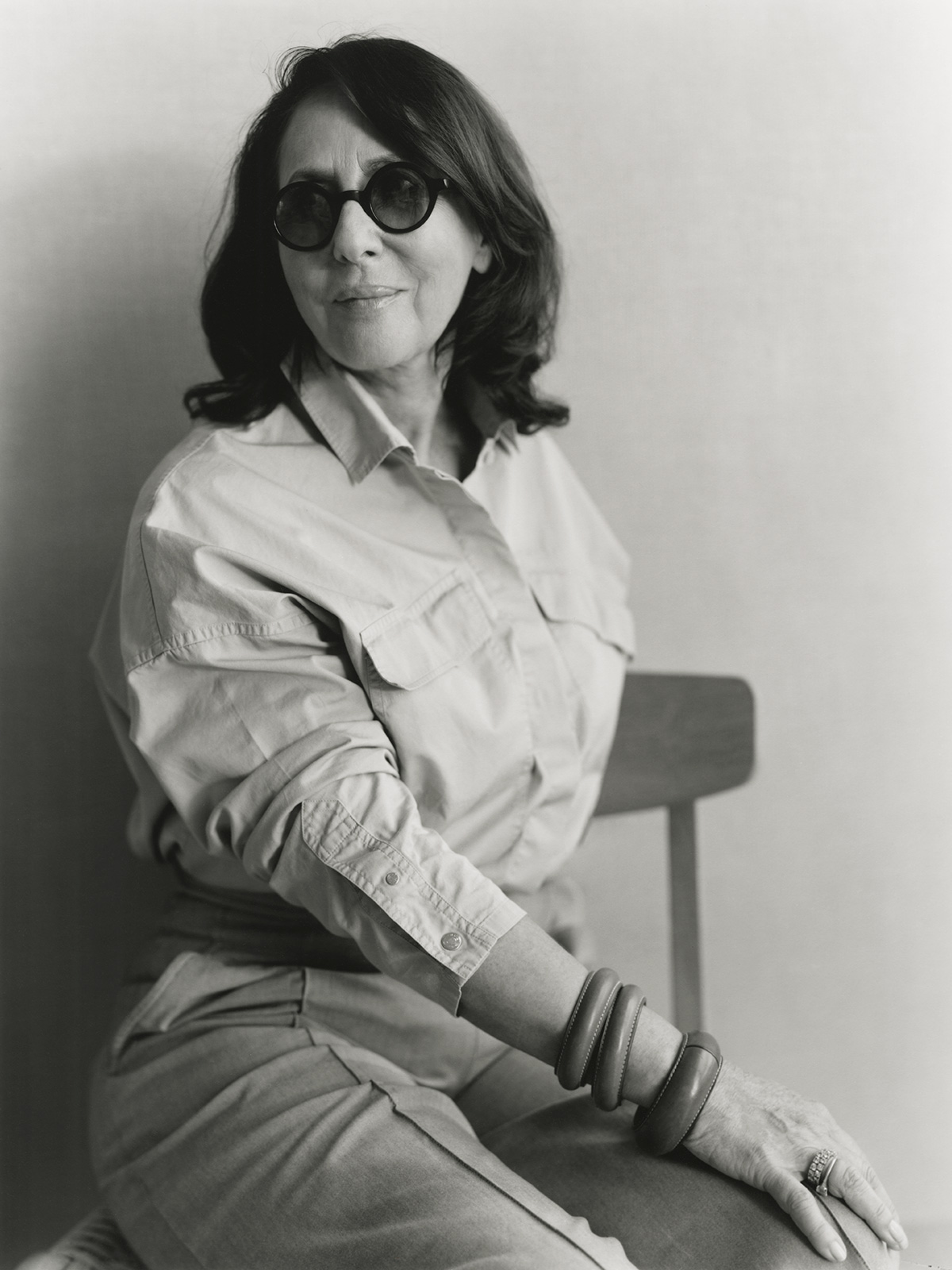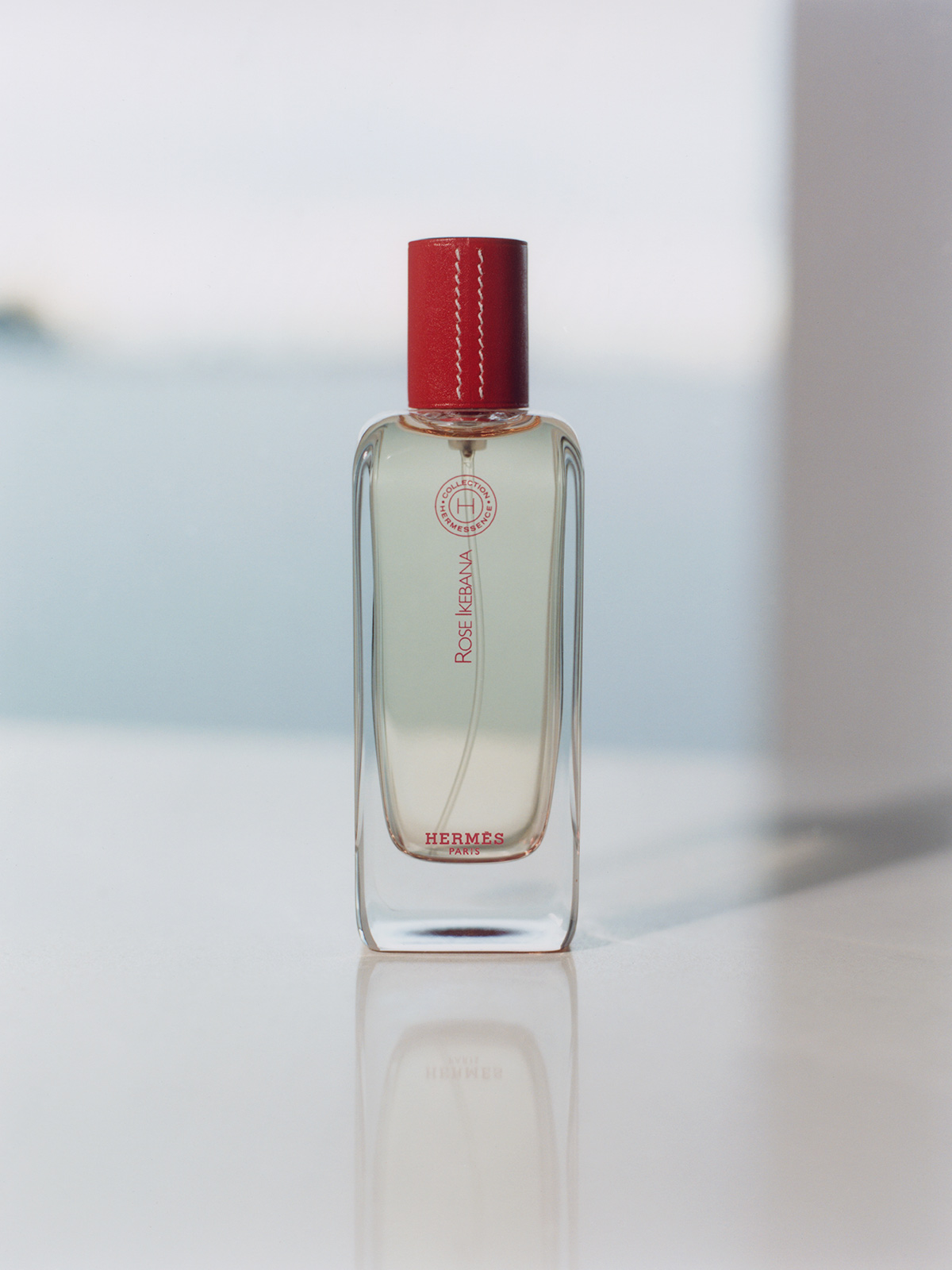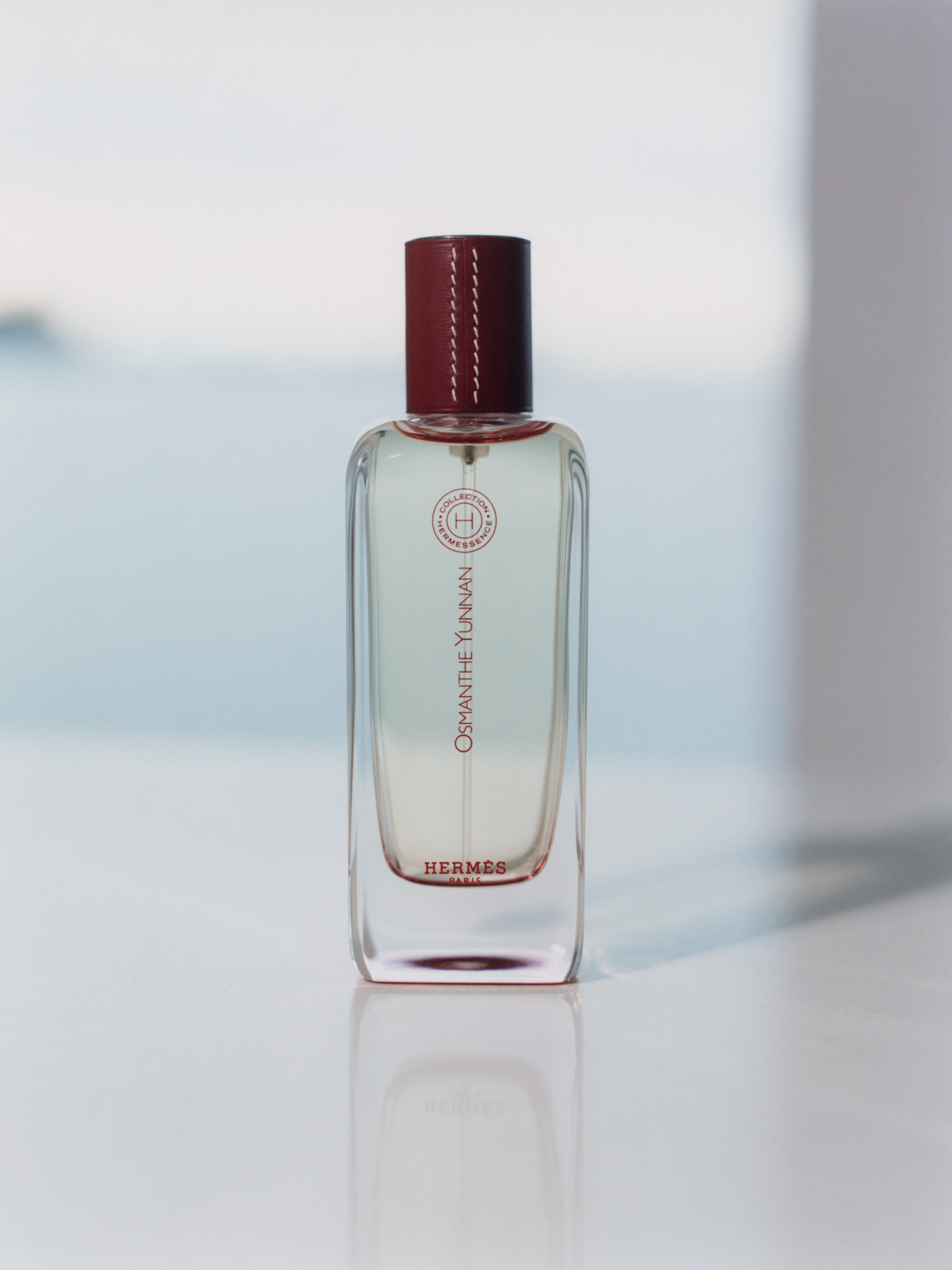
Hermès maître parfumeur Christine Nagel on the secrets of building a scent for the first issue of Notes on Beauty
The ephemeral, like a dream, can be slippery, difficult to hold. Christine Nagel, Hermès’s nose since 2016, captures the undertow of a moment, rendering the evanescent into the enduring, her perfumery both honoring tradition and transgressing it. One of the few in-house female maîtres parfumeurs at a heritage luxury brand, she seeks to subsume a signature of her own—though there are those who’d argue her fragrances are distinct in their tactility and sensuality.
Instead, she crafts olfactory expressions that embody the house for which shehas worked for close to a decade: refined raw materials and a certain alchemy for the elegant.
“There’s no creation in amnesia,” she recounts of an in-house mantra, acknowledging the history of Hermès and the tradition of perfumery. Yet she is equally driven to “shake the codes,” disrupting convention to map new olfactory territories. This tension is the engine of her art, allowing her to explore unexpected juxtapositions and push preconceived notions of scent, such as the surprising harmony of delicate violet flower and pressed Russian leather in Violette Volynka, a fragrance from the Hermessence collection.
Often, creativity strikes far from her rooftop lab on Rue de Penthièvre in Paris’s 8th arrondissement. Inspiration is gleaned from the world around her: the sway of a sari, the warm neck of a horse recently jumped, a sun-drenched memory of grass crackling underfoot, a cicada song. And though she demurs on her synesthesia, a kind of sensory kaleidoscope where sights, sounds, and smells intertwine, her descriptions—the “cashmere” of a note, the color of another—suggest a deep, intuitive connection to scent. The master perfumer speaks to Notes on Beauty on painting scentscapes.
Divya Bala: How do you feel about convention in perfume-
making? Do you enjoy traditions or do you prefer turning them
on their head?
Christine Nagel: Both, really—that’s what’s fun. At Hermès, we say there is no creation in amnesia. It’s always interesting to see what was done in tradition, but the best is to be able to shake around the codes and do that sidestep which allows you to bring a little more to your perfume-making.
Divya: Is there a flourish or signature that you have when you’re making a perfume?
Christine: If I say yes, that’s pretentious. People say I have tactile, sensual [ways of] perfume-making. Long ago, a perfume director said he would put creations of perfumers in boxes—he always knew which were mine; he’d recognize it. So maybe I have a signature.
Divya: I read that you have synesthesia. I’ve always been fascinated by this, and I wonder: How does this impact the way you make
perfumes and your life?
Christine: When I make a perfume, it’s true that I have raw materials that remind me of colors or textures, but that’s me. Because I’m half-Swiss, half-Italian—I speak with my hands—that’s almost like synesthesia! When I see a material, I could say, ‘With this cashmere, I see this fragrance or this color.’ But it goes the other way around as well. When I see Véronique Nichanian [Hermès’s Artistic Director, Menswear]’s fashion show, when I see the young men modeling, I can feel the texture with my eyes. I can see to what extent the leathers and cashmeres are soft, the strength of certain stitches. And it sort of translates into fragrance, into smell. But I think if we’re careful, we could all be like that.
Divya: Something anyone could develop as a skill?
Christine: Yes, you could cultivate it. And then you’d have to let go,
you know?
Divya: Does that mean you move through the world and get a sudden inspiration for fragrance?
Christine: Absolutely. With an Hermessence called Oud Alezan, for example; I’m very scared of horses—but when you work [at] Hermès, everyone talks about horses. So one day, I said I’d love to go see the Saut Hermès show jumping event, and I was lucky enough to be able to see the horses in their stalls. I went over to the stalls alone, and the horses weren’t interested in me at all. Perhaps they could feel I was scared, but they were totally ignoring me. So by the end, perhaps I was more relaxed.
At the last stall, I move forward, and a horse brings down her head and puts it next to my cheek. I don’t know why. I went into its stall and smelled it here [Nagel points to the side of her neck]. Her name was Scheherazade, and she had just performed. There was a smell of wet hair and warmth. I could feel the heartbeat. It was a very strong emotion, and I told myself I’d do something with it one day.A few years later, I had a supplier sitting here, in my office, who said, ‘Christine, I have something for you to smell.’ And I did, and it was the exact same emotion as when I smelled Scheherazade. It wasn’t the same fragrance, but it was that same feeling. The material was an oud—very special. I think it was the most expensive oud I’ve ever experienced, and I used it to create Oud Alezan. I don’t know whether that’s synesthesia, but it’s emotion.
“The fragrance I love the most is the smell of my children. Or the people I love. But there are materials. Patchouli [for instance]. I still haven’t finished exploring everything I could. It’s still resisting me.”
Divya: Does that happen often?
Christine: Yes. I traveled once to Greece—I love to discover countries by boat—and [when] I was coming close to the island of Kythira, I saw a field of olive trees under the sunshine of the day. As I was walking over the dry grass, there was this cracking sound under my feet, the noise of the cicadas, and a sudden gust of wind. When that wind arrived, I smelled something that seemed roasted, a grain smell. And from that I created Un Jardin à Cythère, which is a dry garden—dried grass, like cereals and dried herbs.
Divya: How do you record such a fleeting sensory inspiration to be able to come back into the lab and honor that? I imagine it’s like trying to remember a dream…
Christine: This was something I had experienced about ten years ago, and your question is spot on, because I recreated this Greek garden almost a decade later. Usually, the perfumer would go to the garden, draw inspiration and create, but it was COVID, and I was not able to travel. So I thought, either I forget the idea and wait, or I trust my memory and my nose and I work. And I did that. It was marvelous, because while we were locked up, I was in a garden in Greece, in my mind, and I made this fragrance. The first week we could travel, we went back to Kythira, and I found my garden—and my nose was right. I don’t remember many other things, but smells, yes!
Divya: Outside of perfumery, is there a scent in the world that has a particular impact on you?
Christine: The fragrance I love the most is the smell of my children. Or the people I love. But there are materials. Patchouli [for instance]. I still haven’t finished exploring everything I could. It’s still resisting me.
With perfume-making, it’s not about putting one beautiful raw material with another to make a good perfume. It’s more complicated, similar to how a painter might think. When a painter mixes red and blue, he’s looking for violet. When I mix two materials, I get a third fragrance. That is what I’m interested in, that third fragrance. And when I mix one, two, three, four, five… there’s lots of possibilities.
Divya: Are there any unexpected note combinations that you have used to realize this collection?
Christine: Yes, but those are my little secrets. I can’t reveal them! But in the Hermessence collection, which was born in 2004, it’s a collection that really puts two ingredients in majesty. For example, I made an Hermessence called Violette Volynka. Violet, which is so fragile, so delicate, is put together with the strength of the Volynka leather of Hermès. You smell the volatility of the violet, then the intensity of the leather, and back and forth. I like that—that even if one material is fragile, it isn’t overwhelmed by the other.
“Fragrance is not a question of gender but sensitivity. What you put on your skin is very intimate, very personal. Whether man or woman, we follow fashion, but what you put on your skin is different.”
Divya: It reminds me of the way Janis Joplin used to be able to sing two notes at once. Was there anything in the technology of devising these fragrances that is wholly unique?
Christine: It’s in the beauty of the raw materials. And I have the freedom of time. I take the time I need; it could be quick or long. It’s creation that decides, not marketing. I’m free to choose my subject—it’s an encounter with the raw material or with a narrative. And the final decision at Hermès perfumes is down to four people: Véronique Nichanian, Agnès de Villers [Chairwoman and Executive Vice-President, Perfume and Beauty], Pierre-Alexis Dumas [Artistic Director], and me. And that’s why I say I do the most beautiful profession in the most beautiful house in the world. It’s unique.
Divya: There’s a truly androgynous quality to the fragrances. Do you find that men and women experience fragrances differently?
Christine: The collection is genderless and, unfortunately, I think we’re conditioned by the big stores that have men’s fragrances in one corner and women’s in another. Fragrance is not a question of gender but sensitivity. What you put on your skin is very intimate, very personal. Whether man or woman, we follow fashion, but what you put on your skin is different. You must have received, as a gift, bottles of perfume from beautiful brands that you might have tried twice or thrice. But what you really put on your skin is something maybe simpler, which truly corresponds to you.
Divya: Yes, that has happened!
Christine: Me too!
Divya: No! People gift you perfume?
Christine: Yes! People who dare.
Divya: Brave! In that case, do you have a favorite perfume or perfumer?
Christine: There’s a woman who, to this day, amazes me. Germaine Cellier, who made fragrances in the 1940s. She had this one fragrance called Vent Vert, ‘green wind.’ She had the daring at the time to use materials abundantly, with a lot of character. Even today, we wouldn’t dare [use them that way]. She still impresses me a lot.
Divya: Maybe it’s too personal, but do you ever wear fragrances to bed, to dream more vividly?
Christine: [Laughs] It happens. Sometimes. I only wear fragrances I’m working on. So if you smell me, you’ll always smell the fragrance that will come out in two years’ time. In the evening, sometimes I spray the fragrance on which I’m working on my pillow before sleeping, and when I have test bottles, I like to put them in the laundry. My linen smells the best of all the neighborhood! Fragrance is my life. When I drive home in my car, I always leave a little tester strip inside with the fragrance I’m working on. The next morning when I open the car, my nose is at its freshest, and I’m all alone with my little scent strip. I see
things very clearly.
Divya: How long does a fragrance usually take to realize?
Christine: It can take three days, three months, three years, never. There’s no rule. When it’s ready, I present it to Pierre-Alexis Dumas and, as he always says, he’s never said no to me!
Divya: You said that sometimes the process is never finished—do you have a white whale fragrance? One that continues to elude you?
Christine: I think the best example is the fragrance Barénia. When I came to Hermès 11 years ago and I started to understand Hermès, I immediately knew I would make a chypre. Nobody asked me to make this perfume. I worked in secret, for me. Every time I had a moment, I was happy to come back to it. Two years ago, I showed it to Pierre-Alexis, and he said, ‘Let’s go.’ That’s Barénia. Chypre is now my favorite olfactory family. I love it because they say it only reveals itself on the skin. It’s very addictive. When you love a chypre, you love it all your life. One of the most popular chypre is Aromatics Elixir. They say it melts into the skin, which suits Hermès, because artisans often say Barénia leather touches you back, renders the caress. The fragrance is a very instinctive structure.
Divya: I was very interested in the unusual route you had into perfume-making, through medicine and chemistry. What attracted you to those fields, and what about perfume-making drew you astray?
Christine: When I was a child, I dreamt of being a midwife, but in Switzerland you had to do two internships. I had chosen a medical one and a chemistry one. When I did my medical internship, all they made me do was clean things and make coffee. The chemistry internship was much more interesting. So I chose organic chemistry. And just across the road there was [fragrance maker] Firmenich, where a Nobel Prize-winning chemist was working. I wrote a letter asking if I could work for them and they said okay. My work [for Firmenich] was to look for raw materials and scents that were interesting. That’s where I discovered perfume-making and asked if I could be a perfumer. They said no, as at the time it was a more masculine profession. I didn’t come from Grasse in the South of France, I wasn’t the daughter of a perfumer, and I’d studied organic chemistry. The irony is in Paris, today, there are two perfume schools, and one of them requires at least two years of pre-chemistry training. And in both schools they’re almost just women.
Divya: It’s true that it has long been a male-dominated industry.
Christine: For my generation, yes, but I would say that is changing. [With] the perfumers who are about 30-35 years old, it’s about
half-half women and men. Younger than that, it’s almost nothing but women! I think boys are coming back to it; it’s just waves.
Divya: Has your approach to producing perfume changed over your years at Hermès?
Christine: Over the years, [the process] becomes more fluid. I’ve become more daring, and I put less and less constraints on myself. And, probably, it’s also because I have this technical training which is a bit different. I think having this basis on the structure of molecules, their volatility, allows me to be very at ease in my job.
Divya: How do you know when the creation process has ended, that a fragrance is finished?
Christine: Honestly, if I had the recipe for success, I would use it every day. I don’t have it. I create with instinct, always. And there comes a time, I can’t explain it, I just know. I know the perfume is beautiful and can exist on its own—but it doesn’t mean that the story is over!
Divya: When I cross someone in the street and I realize, ‘Ah! It’s Oud Alezan!’ I might follow the person for a moment. The person doesn’t know me, and I may never know them, but they’re wearing a bit of me. And that is a beautiful gift.










